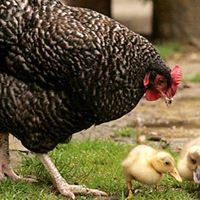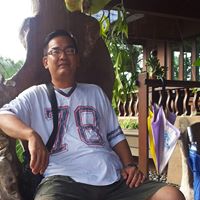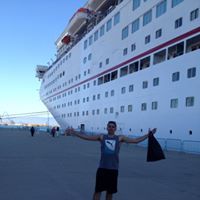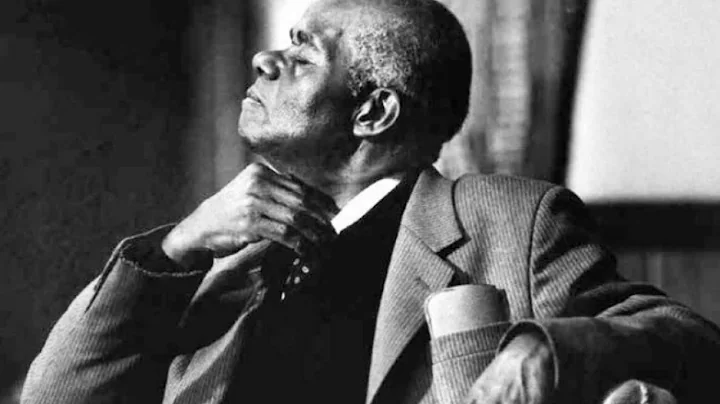John D Hen
age ~84
from Bradenton, FL
- Also known as:
-
- John Azucena Hen
- John C Hen
- John A Hen
- Azucena C Hen
- Phone and address:
-
5110 Savona Run, Bradenton, FL 34211
9417418669
John Hen Phones & Addresses
- 5110 Savona Run, Bradenton, FL 34211 • 9417418669
- 10715 Winding Stream Way, Bradenton, FL 34201 • 9417418669
- Lakewood Ranch, FL
- Atlantic Beach, FL
- 305 Somersby Ln, Macon, GA 31210 • 4787578447
- Skillman, NJ
- Manasota, FL
Education
-
Degree:Graduate or professional degree
Name / Title
Company / Classification
Phones & Addresses
Manager
Jahen Associates, LC
Nonclassifiable Establishments
Nonclassifiable Establishments
PO Box 986, Bradenton, FL 34206
10715 Winding Strm Way, Bradenton, FL 34212
PO Box 110188, Bradenton, FL 34211
5110 Savona Run, Bradenton, FL 34211
10715 Winding Strm Way, Bradenton, FL 34212
PO Box 110188, Bradenton, FL 34211
5110 Savona Run, Bradenton, FL 34211
Resumes

Consultant, Consultant
view sourceLocation:
Bradenton, FL
Industry:
Pharmaceuticals
Work:
Biolife Llc 2009 - 2014
Parttime Technologist
Biolife Llc 2001 - 2014
Technology Manager
The Quantic Group 2001 - 2014
Consultant
Quantic 2001 - 2014
Consultant, Consultant
Parttime Technologist
Biolife Llc 2001 - 2014
Technology Manager
The Quantic Group 2001 - 2014
Consultant
Quantic 2001 - 2014
Consultant, Consultant
Education:
Rutgers University 1966 - 1969
Doctorates, Doctor of Philosophy, Philosophy, Chemistry
Doctorates, Doctor of Philosophy, Philosophy, Chemistry
Skills:
Medical Devices
Quality Assurance
Manufacturing
Project Management
Validation
Management Consulting
Change Management
Product Launch
Business Analysis
Software Documentation
Healthcare
Pharmaceutical Industry
Strategic Planning
Biotechnology
Corrective and Preventive Action
Capa
Quality Assurance
Manufacturing
Project Management
Validation
Management Consulting
Change Management
Product Launch
Business Analysis
Software Documentation
Healthcare
Pharmaceutical Industry
Strategic Planning
Biotechnology
Corrective and Preventive Action
Capa

Chief Executive Officer
view sourceWork:
Textron
Chief Executive Officer
Chief Executive Officer

John Hen
view source
John Hen
view sourceUs Patents
-
Paints Containing Low Sheen Opacifying Pigments Obtained By Flux Calcination Of Kaolin Clay
view source -
US Patent:6346145, Feb 12, 2002
-
Filed:Aug 2, 2000
-
Appl. No.:09/631008
-
Inventors:John Hen - Macon GA
Ray Young - Macon GA
Andres Ginez - Dayton NJ
Sharad Mathur - Macon GA -
Assignee:Engelhard Corporation - Iselin NJ
-
International Classification:C09C 142
-
US Classification:106486, 106468, 501146, 501147
-
Abstract:Flux calcined kaolin clay especially useful as a pigment for low sheen paints is obtained by mixing hydrous kaolin with an aqueous solution of alkaline flux, spray drying, pulverizing, calcining and repulverizing.
-
Method Of Reducing Infections And/Or Air Embolisms Associated With Vascular Access Procedures
view source -
US Patent:8007833, Aug 30, 2011
-
Filed:Sep 10, 2009
-
Appl. No.:12/557102
-
Inventors:John Hen - Bradenton FL, US
Roger Thomas - Pinehurst NC, US
Griscom Bettle - Sarasota FL, US
Timothy J. Kelly - Sarasota FL, US -
Assignee:Biolife, L.L.C. - Sarasota FL
-
International Classification:A01N 59/16
A61M 31/00
A61M 37/00
A61B 17/20 -
US Classification:424646, 604506, 604 46
-
Abstract:A method of reducing infections associated with vascular access procedures. A powder containment device (PCD) is preferably adhesively attached to a skin area, the PCD having a hole formed centrally therethrough adapted to completely surround the catheter wound site. The open cavity formed by the PCD being attached to the skin is filled with a hemostatic agent of a salt ferrate and an insoluble cation exchange material. The salt ferrate combines with blood to form a trivalent Fe ion promoting blood clotting and producing oxygen at the wound site for bacteria reduction. The cation exchange material also forms a protective cover over the wound site as the trivalent Fe ion is formed. Semi-occlusive pressure is applied against the hemostatic agent for a time sufficient to arrest blood flow from the wound site right after inserting or removing the catheter. The PCD and hemostatic agent are then covered with an adhesive dressing. The occurrence of air embolisms introduced around the catheter is also reduced after the hemostatic agent has interacted to arrest blood flow around the catheter.
-
Hemostatic Compositions For Arresting Blood Flow From An Open Wound Or Surgical Site
view source -
US Patent:8110208, Feb 7, 2012
-
Filed:Mar 29, 2010
-
Appl. No.:12/749275
-
Inventors:John Hen - Bradenton FL, US
-
Assignee:Biolife, L.L.C. - Sarasota FL
-
International Classification:A61F 13/00
A61F 2/00
A61K 9/14 -
US Classification:424422, 424423, 424424, 424489
-
Abstract:A hemostatic composition for stopping or decreasing blood flow from an open wound or medical or surgical procedure. Compositions of the invention comprise a mixture of a cationic polymer and a cation exchange material. In one embodiment, the composition comprises a mixture: (1) a high molecular weight copolymer of diallyl dimethyl ammonium chloride (DADMAC) and acrylamide [DADMAC copolymer], and (2) the hydrogen form of a crosslinked, sulfonated polystyrene (hydrogen resin). In an exemplified embodiment, a composition of the invention comprises the mixture of DADMAC copolymer and hydrogen resin provided in a dry powdered form. The compositions of the invention may be applied directly to a wound or treatment site, or they may be incorporated into a wound dressing, such as a bandage. The seal formed at a wound or treatment site treated with the present invention is adhesive and exhibits considerable toughness.
-
Materials And Methods For Wound Treatment
view source -
US Patent:8361504, Jan 29, 2013
-
Filed:Apr 9, 2009
-
Appl. No.:12/421300
-
Inventors:John Hen - Bradenton FL, US
John Alfred Thompson - Nassau, BS
Talmadge Kelly Keene - Apollo Beach FL, US
Michael H. Tollon - Largo FL, US
Mark Travi - Sarasota FL, US
Roger Thomas - Pinehurst NC, US -
Assignee:Biolife, LLC - Sarasota FL
-
International Classification:A61K 9/14
A61K 33/26
A61L 15/00 -
US Classification:424486, 424647, 424646, 424445
-
Abstract:The subject invention pertains to materials and methods for stopping or decreasing the blood flow from an open wound or medical or surgical procedure. Compositions of the invention comprise a salt form of a cross-linked polyacrylic acid. In one embodiment, the composition comprises a sodium salt of a polyacrylic acid. Compositions of the invention can also optionally comprise one or more different salt ferrates, and/or a cationic exchanger resins, and/or a silver compound. In an exemplified embodiment, a composition of the invention comprises sodium polyacrylate provided in a dry powdered form. Polyacrylate compositions of the invention can be applied directly to a wound or treatment site, or they can be incorporated into a wound dressing, such as a bandage. The clot or scab formed at a wound or treatment site treated with the present invention is extremely elastic and exhibits considerable tensile strength when stretched to the breaking point. The subject invention also concerns wound and surgical site dressings and coverings, and methods of using a composition of the invention to stop blood flow from an open wound or treatment site.
-
Materials And Methods For Preparation Of Alkaline Earth Ferrates From Alkaline Earth Oxides, Peroxides, And Nitrates
view source -
US Patent:8372441, Feb 12, 2013
-
Filed:Nov 30, 2009
-
Appl. No.:12/627900
-
Inventors:John Alfred Thompson - Nassau, BS
John Hen - Bradenton FL, US -
Assignee:Biolife, LLC - Sarasota FL
-
International Classification:A61K 33/26
A61K 9/00
C01G 49/02
C01G 29/00
C01F 11/02
A61P 7/04 -
US Classification:424646, 424400, 4235942, 4235947, 42359416
-
Abstract:The subject invention concerns methods for preparing alkaline earth ferrates and the preparation of hemostatic compositions from alkaline earth ferrates. In one embodiment, the alkaline earth ferrate is strontium ferrate. In one embodiment, methods of the invention comprise heat treating mixtures of alkaline earth oxides and/or peroxides with iron oxides, such as hematite or magnetite. The subject invention also concerns hemostatic compositions produced using metallic oxides that are reacted with alkaline earth oxides and/or peroxides and the methods used to produce the hemostatic compositions.
-
Pigment For Rotogravure Paper
view source -
US Patent:20020161097, Oct 31, 2002
-
Filed:Feb 23, 2001
-
Appl. No.:09/792367
-
Inventors:John Hen - Macon GA, US
William Riggin - Midlothian VA, US -
International Classification:C08K003/34
-
US Classification:524/447000
-
Abstract:A mixture of bulked delaminated kaolin and calcined kaolin is used without addition of or substantial reduction in dosage of a titania pigment in a coating for rotogravure paper.
-
Materials And Methods For Wound Treatment
view source -
US Patent:20070269499, Nov 22, 2007
-
Filed:Apr 30, 2007
-
Appl. No.:11/796936
-
Inventors:John Hen - Bradenton FL, US
John Thompson - Nassau, BS
Talmadge Keene - Apollo Beach FL, US -
International Classification:A61L 15/00
A61K 33/26
A61K 33/38
A61K 33/32 -
US Classification:424445000, 424078100, 424647000, 424618000, 424642000
-
Abstract:The subject invention pertains to methods and compositions for wound treatment. The methods and compositions provide for promoting and accelerating wound healing; provide for inhibition of microbial infection; provide for a protective scab-like covering on a wound; and/or for arresting the flow of blood or body fluids from an open wound. The methods and compositions can be used to increase granulation and epithelialization in a wound. In one embodiment, a substantially anhydrous compound of a salt ferrate and a cation exchange material is provided. Compositions of the invention can also include silver compounds. In use, compositions of the invention are preferably applied as a dry dressing to an exuding chronic wound site. If the chronic wound site is dry, the wound site may be wetted with a suitable liquid or aqueous media prior to applying the dressing in dry form.
-
Hemostatic Wound Dressings
view source -
US Patent:20100129427, May 27, 2010
-
Filed:Nov 25, 2009
-
Appl. No.:12/626478
-
Inventors:John Hen - Bradenton FL, US
Talmadge Kelly Keene - Apollo Beach FL, US
Mark Travi - Venice FL, US -
Assignee:BIOLIFE, L.L.C. - Sarasota FL
-
International Classification:A61L 15/16
-
US Classification:424445
-
Abstract:Hemostatic wound dressings for substantially arresting the flow of severe, life threatening bleeding from a wound by rapidly adhering to the wound site, absorbing and concentrating and thickening the blood at the dressing blood interface and accelerating the natural clot formation beneath the dressing and finally, forming a strong seal that will substantially prohibits further flow of blood out of the wound site. These hemostatic wound dressings are formed of unique combinations of hemostatic dressing aspects which achieve wound seal strengths that are significantly higher than the sum of seal strengths expected from the individual aspects alone. Some embodiments also achieve these synergistic seal strengths by combining one hemostatic dressing with a non-hemostatic device.
Vehicle Records
-
John Hen
view source -
Address:10715 Winding Strm Way, Bradenton, FL 34212
-
VIN:4T1BE46K57U672502
-
Make:TOYOTA
-
Model:CAMRY
-
Year:2007

John Hen
view source
Hen John
view source
John Hen
view source
John Hen
view source
John Nadeem Hen
view source
John Hen
view source
John Hen
view sourceClassmates

Montwood High School, El ...
view sourceGraduates:
Jordan Kelch (1999-2003),
Mary Ann Aparicio (2001-2005),
John Hen (1997-2001),
Kris Gillham (1993-1997),
Jennifer Peden (1992-1996)
Mary Ann Aparicio (2001-2005),
John Hen (1997-2001),
Kris Gillham (1993-1997),
Jennifer Peden (1992-1996)
Myspace
Youtube
Googleplus

John Hen
Flickr
Get Report for John D Hen from Bradenton, FL, age ~84













